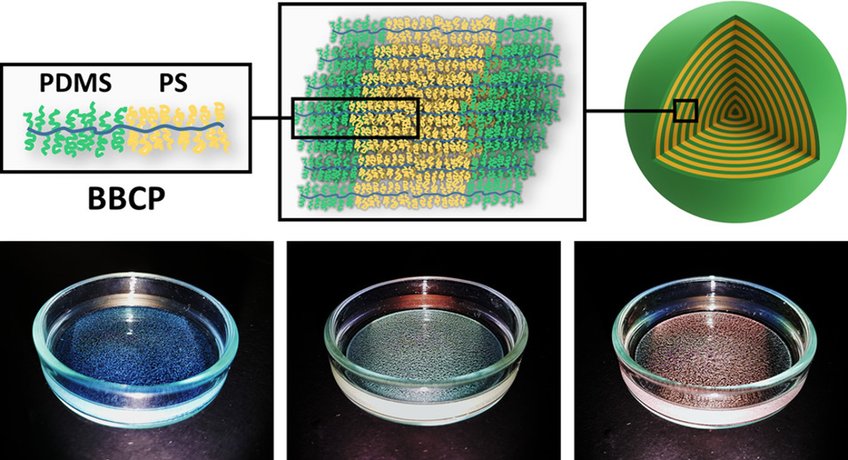
Polymer Self-Assembly
Research Topic of the Department
Block copolymers (BCPs) are a promising class of materials widely used in the fabrication of photonic materials, thanks to their ability to self-assemble into structures at the scale of visible light wavelengths. Compared to other materials used in bottom-up self-assembly, such as colloids, BCPs offer several key advantages, including fast self-assembly kinetics, macroscopic ordering of the resulting structures, and a high tolerance for functional additives. Additionally, the ability to control the resulting colouration by tuning the molecular structure of the BCPs allows for the directed assembly of more complex microstructures. BCPs have been used to self-assemble a diverse range of photonic architectures, from long-range ordered structures (e.g., closely-packed micelles, hexagonally-packed cylinders, gyroids, double diamond, cubic, and correlated networks) to systems exhibiting short-range order, such as photonic glasses.
The field of BCP-based photonics has evolved over time, with two main types of BCPs employed in the development of photonic materials: linear block copolymers (LBCPs) and brush block copolymers (BBCPs). BBCPs, in particular, feature densely grafted side chains that introduce significant steric hindrance, which increases the rigidity of the polymer backbone. This enhances the conformation of the BBCP, reducing chain entanglement and promoting larger, well-defined molecular dimensions, along with faster self-assembly kinetics. Since 2016, there has been a notable shift toward BBCPs in photonic systems, due to these benefits.
In our department, we are exploring: (i) the use of confined self-assembly of BBCPs within droplets to produce photonic pigments; (ii) strategies to enhance self-assembly or introduce additional functionality; and (iii) the development of biocompatible and biodegradable BBCP-based photonic systems.